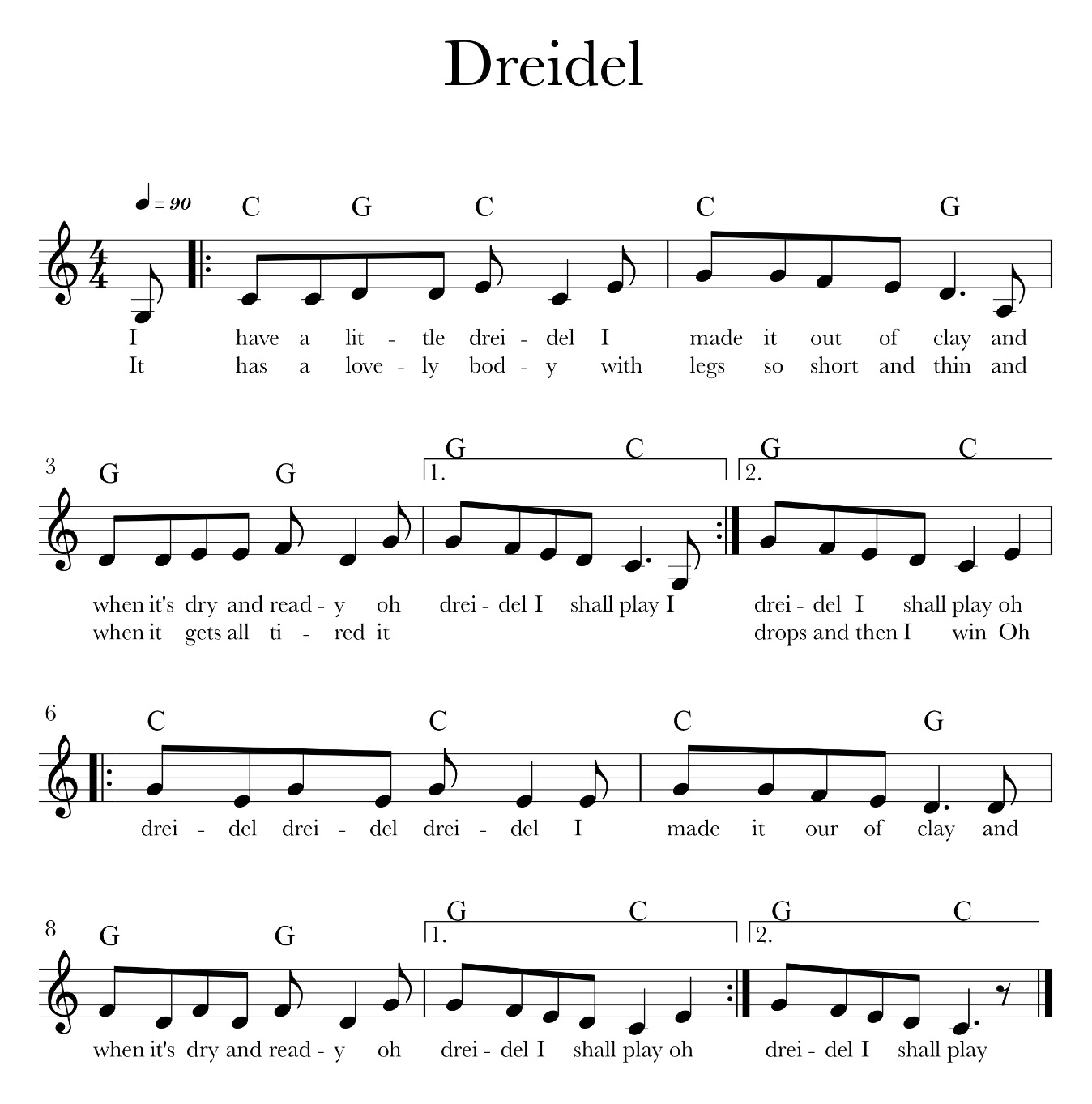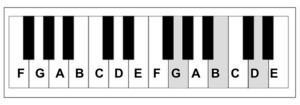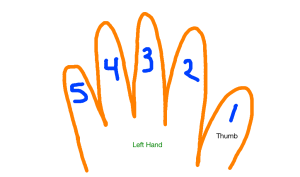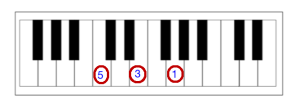How to play left hand notes even if the sheet music does not spell them out
(and even if you have never played piano before!)
When I was learning to play piano as a kid, I could not understand why anyone would publish music with just the treble clef (ie the melody line). Who would need to play with just the right hand? What self respecting teacher would allow her student to play that???
When I switched piano teachers, I discovered that much of this “melody only” music actually contained guidance for the left hand as well!
(You can read the whole story here.)
It turned out that there are often letters on top of the notes that give you clues for what to play in your left hand. This comes in really handy when the music does not include a bass clef. And it is super convenient if you have never learned to read notes or just don’t enjoy it!
Let’s take a look at how this works.
How to play LH (left hand) notes when the music does not have LH notes
As an example, let us take a simple song that everyone knows:
See those letters on top of the notes (C and G)?
Those are the chords.
While the right hand notes spell out the melody, or tune, of the song, the chords provide the harmony and framework for the song.
What is a chord?
A chord is a group of three or more notes that are played together at the same time.
This song has two chords:
C Major, or just “C”
and
G Major, or just “G”.
(Yes, that is why I picked this song – not because it is my favorite song, but because it can be played using just two chords!)
C Major consists of the notes C-E-G.
G Major consists of the notes G-B-D.
(Not familiar with the notes on the piano? Learn the names of the notes on the piano!)
How to play chords
When it comes to playing chords, there are really an endless numbers of ways to do it. For now, we will keep things simple:
To play a chord, play all three notes of the chord at the same time.
This way of playing a chord is sometimes referred to as a block chord.
Play these chords using fingers 5-3-1 of your left hand.
When to play chords
Again, there are infinite possibilities here. And again, we will try to keep it simple for now.
I have provided two versions of sheet music to accompany this lesson. The description of “when to play chords” differs slightly for each:
“Note version” (Fake-Book Style)
Basic note-reading skills required.
Download “I Have a Little Dreidel” Sheet Music (note version)
- Draw a vertical line from each chord down to the note beneath it
- Begin to play the melody of the song (right hand)
- When you reach a note that has a line drawn up to the chord, play the chord
- Hold down that chord in your left hand while continuing to play the melody in your right hand until you reach another note/chord pair
- Repeat steps 3 and 4 for the remainder of the song.
“Note-free version” (Lyrics and Chords)
No note-reading required, but you do need to know how to sing the song.
Download “I Have a Little Dreidel” Sheet Music (note-free version)
- Draw a vertical line from each chord down to the letter beneath it.
(Chords often begin in the middle of a word, not just at the beginning.) - Begin to sing the song.
- When you sing any word or part of a word that has a line drawn up to the chord, play the chord
- Hold down that chord until you reach a word (or letter) that has a different chord.
- Repeat steps 3 and 4 for the remainder of the song.
Repeating Chords
Normally, sheet music will only document chord changes (such as C to G or G to C). In other words, the sheet music doesn’t usually contain repeating chords (for example, C C C G). The musician is expected to continue playing each chord, repeating as necessary, until the next chord change.
Because we have not yet tackled measures or beats, I have used repeating chords in the sheet music for this lesson. Hopefully this will make it easier for some of you to get started playing!
Do this!
- Play a C chord using your left hand. Try it as many times as you need in order to feel comfortable.
- Play a G chord using your left hand. Try it as many times as you need in order to feel comfortable.
- Alternate between C and G.
- Melody and Chords: Play or sing the melody, adding chords in the appropriate places.
Hear this!
Here is how this song should sound:
Tip: Find a friend who also wants to learn to play Jewish music. It is always more fun when you have company, and you can help keep each other on track!






I know the chords but do not know how to find the right hand melody as I don’t have sheet music, is there a way to tell from the chords,like would they be the root nootes for instance?